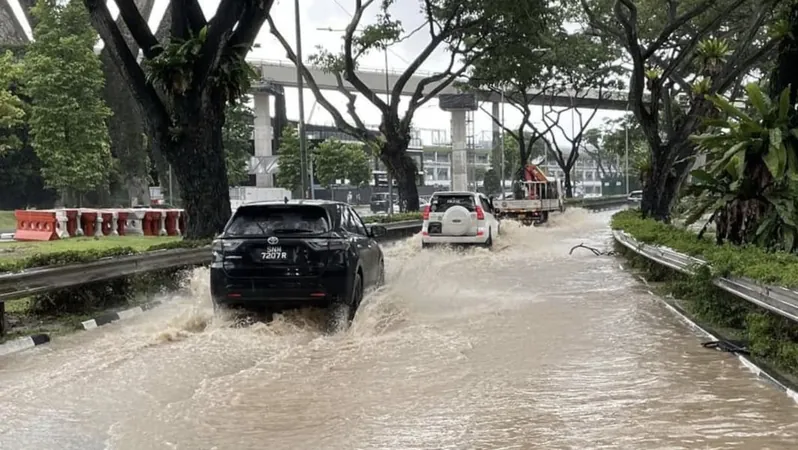
Essential Tips for Safely Navigating Flash Floods: What You Should Know
2025-01-10
Author: Mei
What to Do When Caught in a Flash Flood
Driving through floodwaters can be perilous. Experts suggest that motorists should aim to avoid driving through any water, especially if it appears to be more than 15cm (6 inches) deep or higher than the curb. Vehicles can stall when water enters the engine—a common cause of catastrophic vehicle damage. According to Mr. Wong Che Wey, regional technical training manager at Motul Asia Pacific, such situations can severely compromise a vehicle's electronics and lead to hazardous conditions.
Understanding the Risks of Flash Flooding
When tempted to navigate flooded areas, be aware of the hidden dangers lurking beneath the surface. Mr. Jake Ler from the motoring platform Motorist warns that obstacles like potholes and debris can be deadly when submerged, while also cautioning against the risk of “aquaplaning,” where tires lose traction on wet surfaces.
Stuck in Floodwaters? Here’s What to Do!
In the unfortunate event that your vehicle becomes stranded, do not restart the engine, as it could introduce more water into it. Instead, activate your hazard lights to alert other motorists and call for emergency assistance. If the water level keeps rising, evacuate your vehicle and move to a safe, higher location immediately. Quick decision-making can be vital in avoiding serious accidents.
Are Electric Vehicles Safe in Flood Conditions?
Interestingly, electric vehicles (EVs) are not deemed at a higher risk of malfunction during floods. Modern EVs feature sealed battery packs and insulated systems, reducing the likelihood of water ingress. Experts recommend, however, that owners be mindful of prolonged exposure to high water levels, as risks can vary by manufacturer and model.
Public Transport Protocols in Flood Situations
Transport operators like SBS Transit, Go-Ahead Singapore, and Tower Transit have established protocols for their bus drivers when encountering flooded roads. Drivers must consult their operations control centers for guidance on alternative routes. Safety is paramount; should a bus stop become flooded, drivers are instructed to keep passengers on board until they can safely assess the situation.
Safety for Pedestrians
For those who find themselves in flood-prone areas, PUB advises turning back and seeking higher ground. If you must walk through floodwaters, avoid swift currents and use a sturdy object to test the ground’s stability. This caution is particularly crucial in preventing falls, especially in waters exceeding ankle height.
Stay Informed and Prepared!
With unpredictable weather patterns and the risk of flooding, everyone is encouraged to stay informed about potential flood risks and their local weather. You can receive alerts about heavy rain and flooding by subscribing to the PUB Flood Alerts service via the Telegram app or by downloading the myENV app—stay safe and drive carefully as monsoon season approaches! Being proactive and knowledgeable will ensure that you are ready to face any unexpected flooding while protecting both yourself and your vehicle.




 Brasil (PT)
Brasil (PT)
 Canada (EN)
Canada (EN)
 Chile (ES)
Chile (ES)
 Česko (CS)
Česko (CS)
 대한민국 (KO)
대한민국 (KO)
 España (ES)
España (ES)
 France (FR)
France (FR)
 Hong Kong (EN)
Hong Kong (EN)
 Italia (IT)
Italia (IT)
 日本 (JA)
日本 (JA)
 Magyarország (HU)
Magyarország (HU)
 Norge (NO)
Norge (NO)
 Polska (PL)
Polska (PL)
 Schweiz (DE)
Schweiz (DE)
 Singapore (EN)
Singapore (EN)
 Sverige (SV)
Sverige (SV)
 Suomi (FI)
Suomi (FI)
 Türkiye (TR)
Türkiye (TR)
 الإمارات العربية المتحدة (AR)
الإمارات العربية المتحدة (AR)